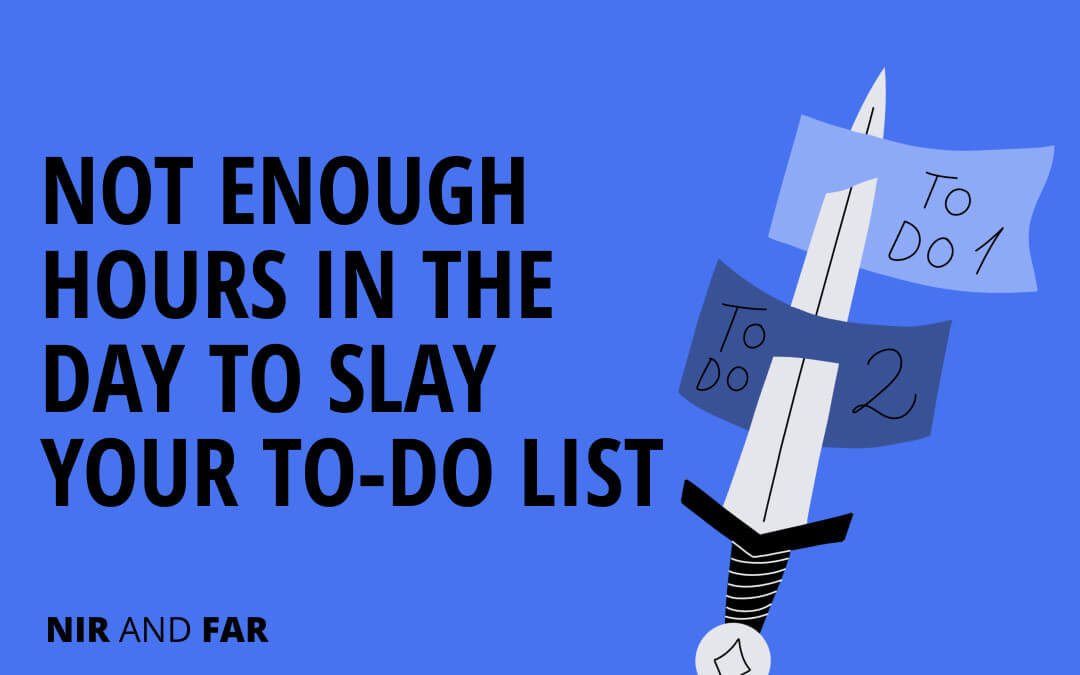You can search for the best productivity apps to make you more efficient and focused. You can implement productivity hacks and cut distractions. But you still might feel like there simply are not enough hours in the day for everything you need to get done.
Something has to give. You have to prioritize some activities over others—or else you’ll be spread too thin to dedicate yourself to anything fully.
Read on for a simple strategy to identify and honor your priorities.
To Prioritize, Turn Your Values Into Time
When you look at your list of want-to-dos, everything may seem necessary. Everything you listed is good for you. It would be great if you dedicated five hours a week to exercise; fantastic if you spent an hour practicing a new language; marvelous if you committed one day a week to business-growth tasks.
So how do you choose which goals and tasks to prioritize and which to set aside for now?
Don’t spend a fraught number of hours weighing the importance of every goal and task. Instead of starting with what we’re going to do, we should begin with why we’re going to do it. So we should start with our values.
Values are the attributes of the person you want to become. They are “how we want to be, what we want to stand for, and how we want to relate to the world around us,” according to Russ Harris, author of The Happiness Trap. Here are 20 common values.
You can categorize your values into three domains of life: yourself, your work, and your relationships:

Once you’ve identified your values, they act as a guiding star, showing you where to focus your attention. You can then turn your values into time.
First, write down which tasks will help fulfill those values and move you toward your ideal self.
Doing so helps you decide which goals and tasks need to be prioritized now. Try to limit the number of these primary goals and tasks to the most essential. You can always add more later—but the point is to ensure your top priorities have real estate on your calendar.
Next, use timeboxing, the most powerful time management technique, to block off space for your priorities in a calendar, giving them all the time they require. To get started, you can use my free schedule maker.
You might add dinnertime with your family every weekday, an hour of exercise every morning, or the number of hours of sleep you require. Even timeboxing one activity is a great start.
Overcoming “Not Enough Hours in the Day” Is a Process
By focusing on a few things at a time, you’re more likely to achieve them. The participants of one study who tried to accomplish multiple goals were less committed and less likely to succeed than those who focused on a single goal. Trying to accomplish too much at once is overwhelming.
I have a friend who’s always wanted to learn a second language. But it wasn’t until she made learning Spanish a priority for two years that she made significant progress in becoming fluent.
Perhaps the idea of dedicating a chunk of time every week to the same task for two years sounds daunting to you. My friend claims the years went by quickly and that she likely wouldn’t have achieved anything else significant in its place if she pursued too many goals.
However, if that reassurance is wholly unsatisfying for you, here are a few tried-and-true techniques for prioritizing competing values:
- Give “seasons” to your life—say, 90 days to a year—in which you focus on one thing before moving on to the next. It may make you more comfortable prioritizing a value if you know it’s just for a certain period.
- Identify what is urgent. What matters most right now? If you value being a role model for your children, you must prioritize time with them in their formative years.
- Use the bubble sort method: List your values on a horizontal grid. Ask yourself which of the first two values is more important, and move the most important to the left. Then compare the second and third values and move the most important to the left. Continue until your values are in order of importance from left to right.
- Tackle values that are simple to fulfill first. For example, getting enough sleep is a natural starting point if you want to be mentally and physically healthier.
- Follow the 80/20 rule: Identify the 20 percent of your values that will likely contribute to achieving 80 percent of what you want. In other words, assign time to the values that will result in the most significant traction toward your ideal self.
With a manageable set of priorities, we also increase the likelihood that they become routines or habits. (They are not the same!) Once those activities are streamlined, you’ll have more headspace and calendar space to focus on others.
Sometimes, dedicating time to activities that fulfill a value reveals surprising truths, such as that a value is not as significant as you once thought. Giving time to our perceived priorities helps us learn about ourselves.
Naturally, your values and priorities can change over time. You can revise your timeboxed calendar as your life and values evolve; “people make time for what they want,” as they say. It’s the best way to ensure you can have it all—even if it’s not all at once.
Related Articles
- Schedule Maker: a Google Sheet to Plan Your Week
- Habit Tracker Template in Google Sheets
- The Ultimate Core Values List: Your Guide to Personal Growth
- Timeboxing: Why It Works and How to Get Started in 2024
- An Illustrated Guide to the 4 Types of Liars
- Hyperbolic Discounting: Why You Make Terrible Life Choices
- Happiness Hack: This One Ritual Made Me Much Happier

